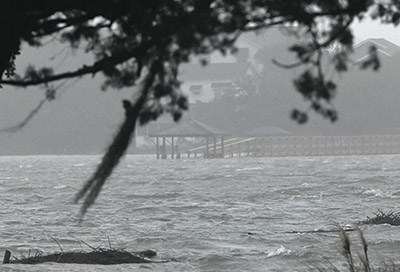Legislature
Lawmakers create an exemption that state agency had denied

State legislators last week gave Georgetown County a break from a flood regulation that a state agency was unwilling to grant.
Without a change to the state law, the county would have to enforce building standards for structures in some inland areas that previously applied only to structures on the oceanfront.
“LLR could fix this, but they refuse to do anything,” state Rep. Lee Hewitt said, referring to the state Department of Labor, Licensing and Regulation.
State Sen. Stephen Goldfinch introduced a bill April 29 to grant the county an exemption. It received three readings and moved to the House, where it passed last week. It now awaits the governor’s signature.
“The standard that people have to overcome to overturn an agency decision is a high one,” Goldfinch said, one that he thinks is “arbitrary and capricious.”
The issue arose in 2023, when federal Flood Insurance Rate Maps for the county were updated for the first time since the 1980s. The new maps showed the “limit of moderate wave action,” known as the LiMWA line, where wave heights of 1.5 to 3 feet could be expected. That lines extends as much as 6 miles inland, taking in areas along the Pee Dee River and Wedgefield Plantation outside Georgetown.
Under an updated building code adopted by the state in 2021, structures east of the LiMWA line must be built to the standards required in the “V zone” along the oceanfront.
The county asked the state Building Codes Council, part of LLR, to waive the requirement. Following a hearing at which the county’s chief building official, Steven Elliott, testified that the new code could make many existing structures nonconforming, and therefore unable to get insurance, the council denied the request.
The council said the county failed to provide sufficient support for its claim and thought the waiver would affect public safety.
The county challenged the decision on procedural grounds and got a second hearing that included testimony from Steve Strickland, owner of the Earthworks Group, and Matt Millwood, the county’s certified floodplain manager, that the LiMWA lines were incorrect.
The request was denied again, but county officials said they were told afterward that they could use their discretion about enforcing the code. They sought to have that included in the ruling. The council declined.
In December, the county filed an appeal with the state Administrative Law Court. At the same time, they asked the lawmakers for help.
Hewitt said he hoped the prospect of legislation would force the agency to act. “They waive things all the time,” he added.
Instead, the agency sought to have the appeal dismissed on procedural grounds. A judge denied a motion to dismiss in March.
Goldfinch said he was first contacted by a lobbyist hired by the county. He filed the bill after talking with Elliott and Jay Watson, the county attorney.
“They think the math is totally wrong” in defining the LiMWA line, he said.
The bill is one paragraph and exempts the county from the requirements for property within the LiMWA line, allowing it to enforce the standards for the AE flood zone. That would require structures to be elevated based on the estimated flood height.
Hewitt said the extension of the V zone standards through the LiMWA line was particularly ironic because the new flood maps reduced the V zone in some areas along the county’s beachfront.
“V zones require driven pilings,” he said. If an existing structure is damaged by more than 50 percent of its value “you’ve got to pick this house up, move it off the lot, drive pilings and move it back.”
The lawmakers said they don’t think there is any risk for property owners from the exemption. Without it, the county feared it would lose federally-subsidized flood insurance if it failed to enforce the code.
“It puts Georgetown County in the position of just not enforcing the code, which would be a liability, or give them the flexibility to work around the issue,” Hewitt said.




